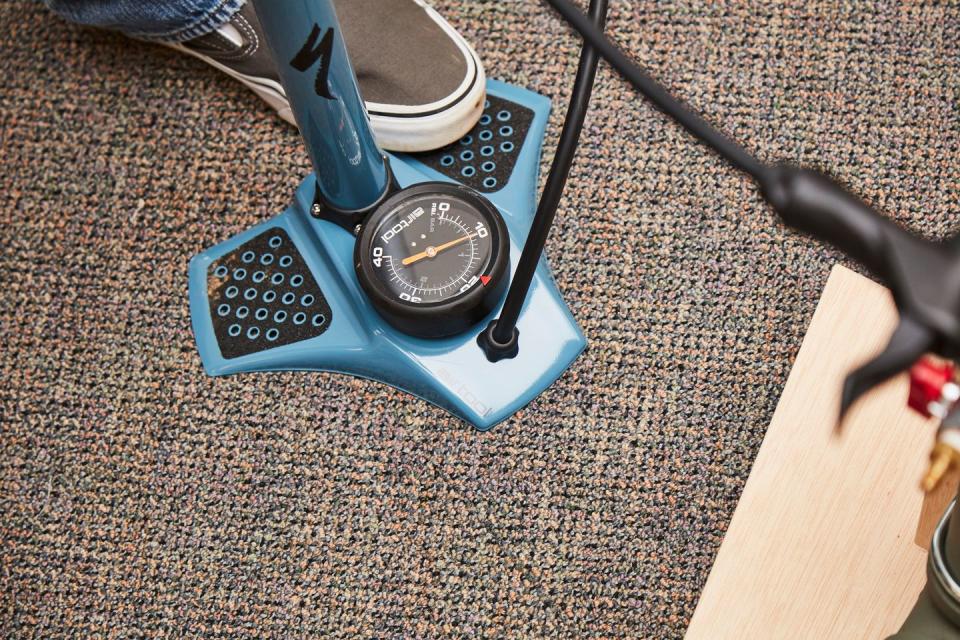A Step-by-Step Guide to Pumping Up Your Tires the Right Way

Before every ride, it’s a good idea to get in the habit of checking your tire pressure. Tires need the right amount of air to function optimally, and getting them to the right psi efficiently can require some finesse. Mitch Mcleod at Kamikaze Bikes in Collingwood, Ontario, walks us through exactly how to pump your bike tires so you can keep rolling confidently.
Pick the right bike pump

There are two popular tube valves: A Schrader valve is wider and flat on the end, while a Presta valve is narrower and features a locking nut at the top, which can be loosened to add or release air. An easy way to remember the Presta valve is that you press to let air out.
Mcleod says that a common mistake new (and even experienced) riders make when pumping their tires is trying to use a Schrader bike pump with a Presta valve, which just won’t work no matter how hard you try.
If you’re unsure which pump to buy, check out our list of tested and reviewed bike pumps, or ask for recommendations at your local bike shop. When it comes to pumps, you almost always get what you pay for. A little extra investment can give you a more accurate psi reading, a sturdier bike pump, and even easier inflation.
Prepare the valve

First, remove the plastic cap that might be covering the end of your valve (sometimes these get lost, so no big deal if yours is missing.) Then—Mcleod says this is a commonly skipped step with Presta valves—unscrew the tiny locking nut at the top. Don’t be shy; the nut won’t fall off, so there’s no need to worry about unscrewing it too much. Give it a couple of taps to make sure it’s moving—you should be able to hear and feel a bit of air come out out. (If you have a Shrader valve, you can skip this step.)
Know the tire pressure you need

Before you pump, check the sidewall of your tire: It should list the pounds-per-square-inch (psi) range that your tire can safely handle. Typically, a road tire can go between 80 and 130 psi, while a mountain tire holds between 25 and 50 psi. Hybrids usually take between 40 and 70 psi. Where your personal psi preference falls within the range for your tire will depend on your weight and riding style—play around with it and figure out what you like, or you can use our handy guide here.
Attach the pump correctly

Fit the pump head onto the valve. Pumps will have either a switch that flips down or up, or an internally threaded screw top. Both systems serve to keep the head in place as you start pumping, which ensures that air actually goes into the valve instead of leaking out while you pump.
If air seems to be coming out of the pump and not into your tires, you may need to readjust the pump head slightly. Just detach and reattach to reset the seal.
Pump to the optimal pressure

Using the gauge on your pump to guide you, pump the tubes up to your optimal pressure. And use your upper body and core to pump. Squats are great for building leg strength, but they aren’t required for bike maintenance. Let your arms or even your abs do the work—it can seriously feel like a mini workout.
Go ride!
Once you’ve pumped your tires to the pressure you want, simply flip the switch on the pump head so it pops off, and retighten the locking nut before you replace the valve cap. Then, as Mcleod so aptly puts it: “Go shred.”
You Might Also Like
